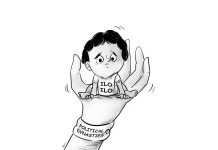
IN JUST the first five months of this year, Western Visayas recorded 2,837 cases of dengue, including six fatalities. This 18 percent increase compared to the same period last year, according to the Department of Health – Region 6, must not be trivialized. This trend could escalate with the shifting weather patterns associated with El Niño and the upcoming La Niña.
The link between our current climate conditions and the rise in cases of dengue – a mosquito-borne viral infection manifesting with severe flu-like symptoms and, in extreme cases, can be fatal – cannot be ignored. The ongoing El Niño phenomenon has led to prolonged dry spells and water scarcity, prompting residents to store water in containers — a prime breeding ground for dengue-carrying mosquitoes. This situation could be exacerbated by the forecasted arrival of La Niña, which typically brings about more rainfall and the potential for further water accumulation, creating additional habitats for mosquitoes.
The recent data indicates a concentration of cases in Iloilo Province, Bacolod City, and Negros Occidental, with children aged one to 10 years being particularly vulnerable. But looking beyond the statistics, these are communities affected by a preventable disease, with every new case representing a family grappling with worry and fear.
DOH-6 is commendably intensifying its dengue prevention campaigns, advocating for the 5S approach—Search and destroy mosquito breeding sites, Self-protection measures, Seek early treatment, Support fogging or spraying in hotspot areas, and Sustain hydration. However, community engagement and individual action are paramount to curb the spread of this disease effectively.
What can we, as a community, do to combat this surge in dengue cases?
We must take collective responsibility for reducing mosquito breeding sites in our neighborhoods. This involves regular cleaning of water storage containers, proper disposal of waste that could collect water, and maintenance of yard cleanliness to eliminate potential breeding grounds.
Individual protection measures, such as the use of mosquito repellent, wearing long-sleeved clothing, and installing screens on windows and doors, are smart steps in protecting oneself and one’s family. Additionally, the public must be educated about the importance of seeking medical attention at the first sign of dengue symptoms, which can drastically improve the outcomes of infected individuals.
It is also crucial for local government units to support fogging and spraying in identified dengue hotspots, a measure that can reduce the adult mosquito population significantly. These must, however, be balanced with environmental considerations to ensure that we do not cause additional harm to our ecosystems.
We owe it to our communities to engage in a comprehensive and united front against dengue as we deal with the impacts of El Niño and prepare for the uncertainties of La Niña. Our response to the dengue threat in Western Visayas must be coordinated and, more importantly, sustained.







